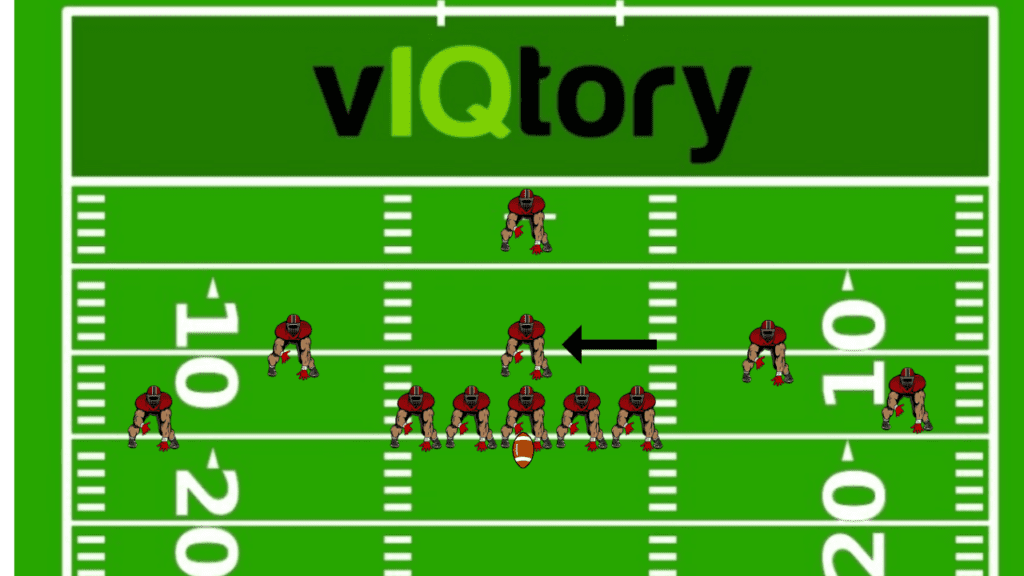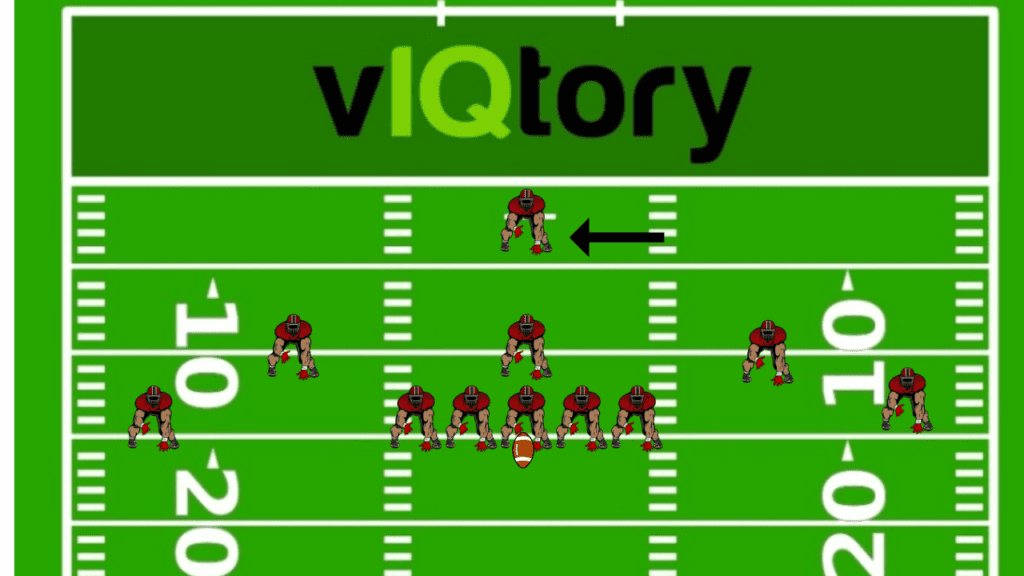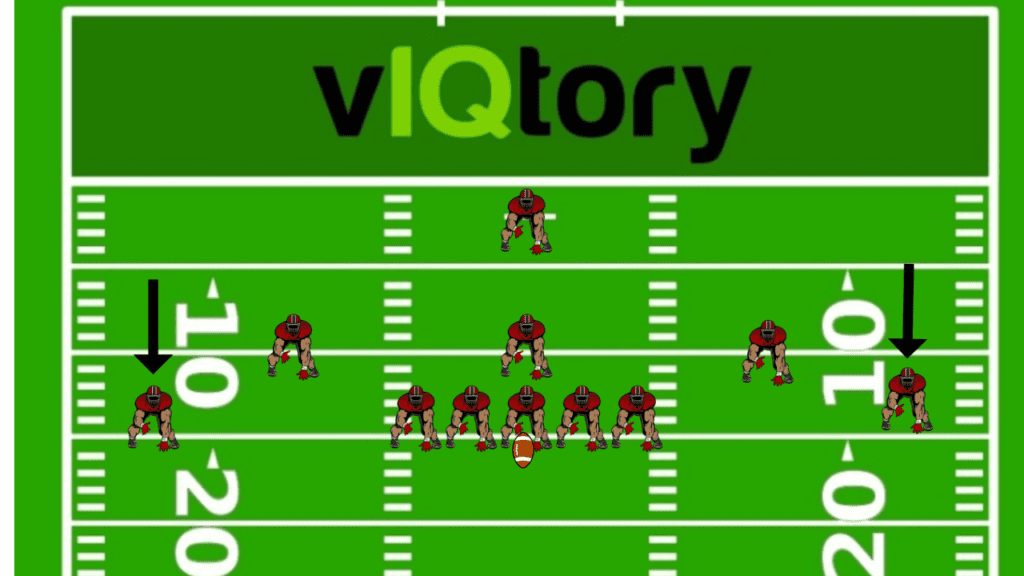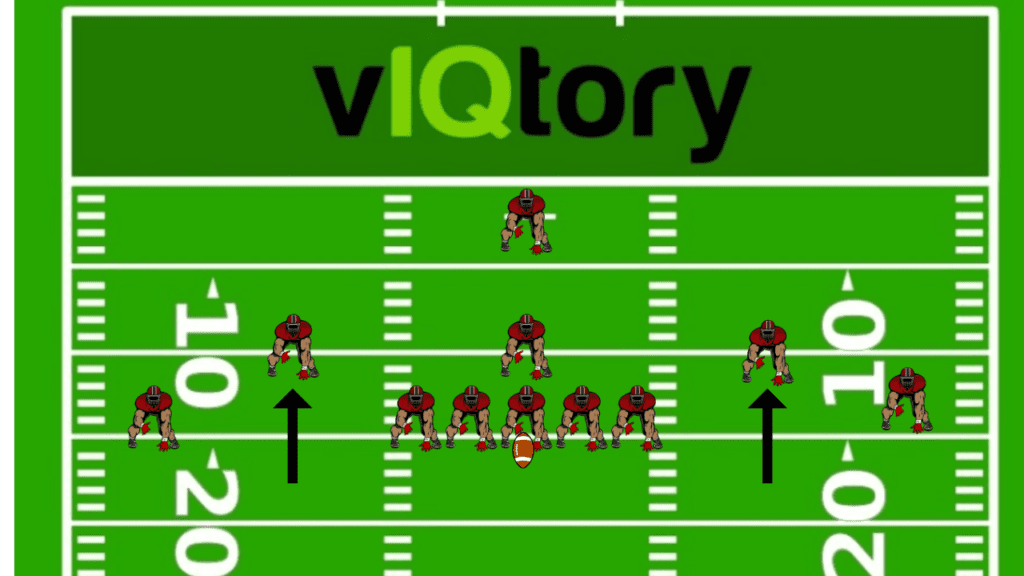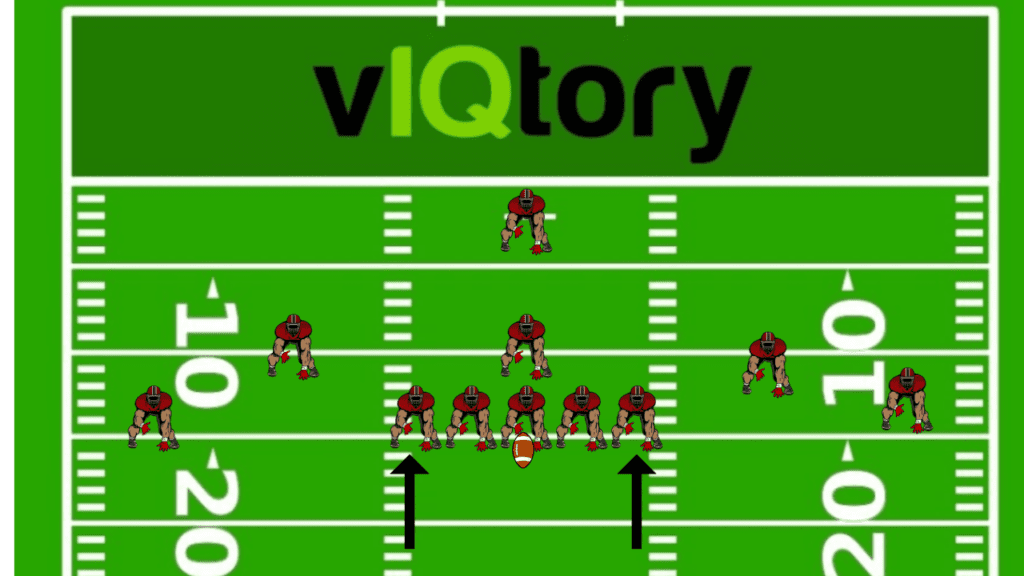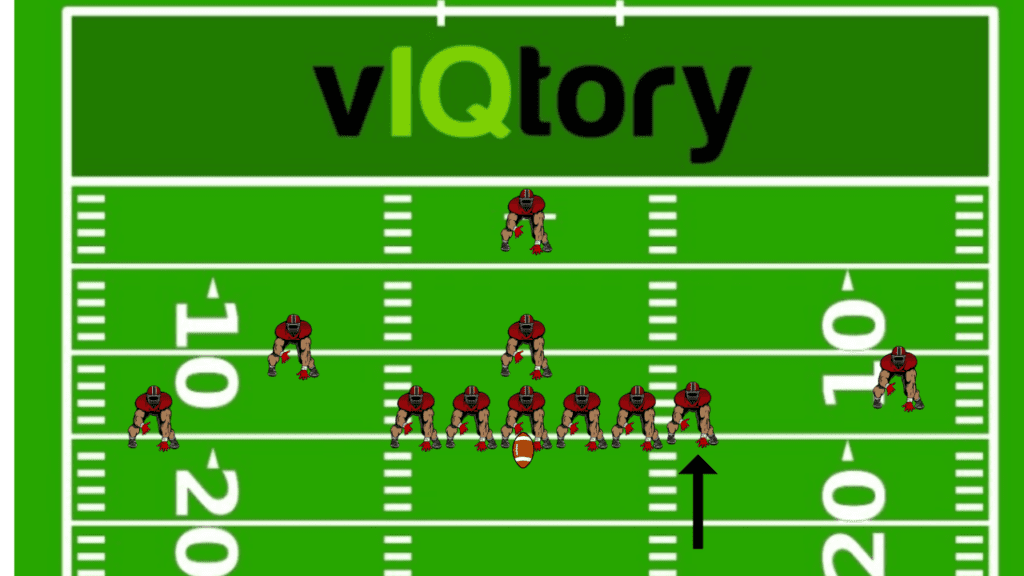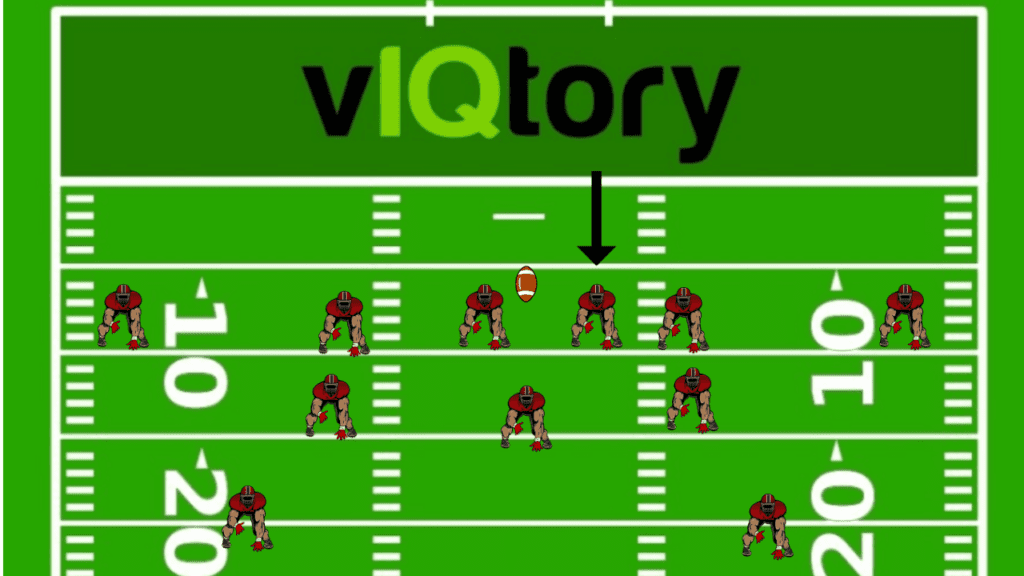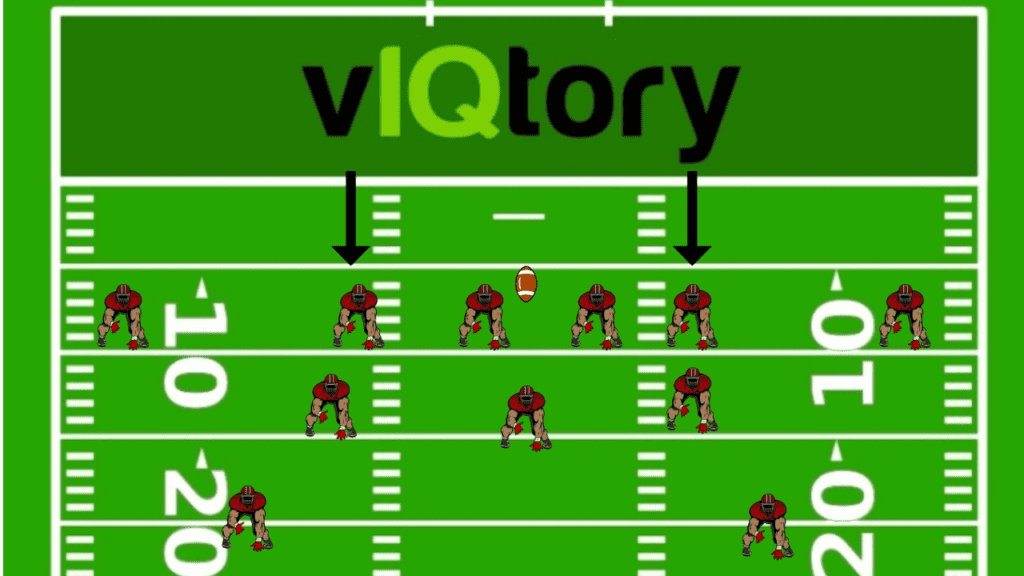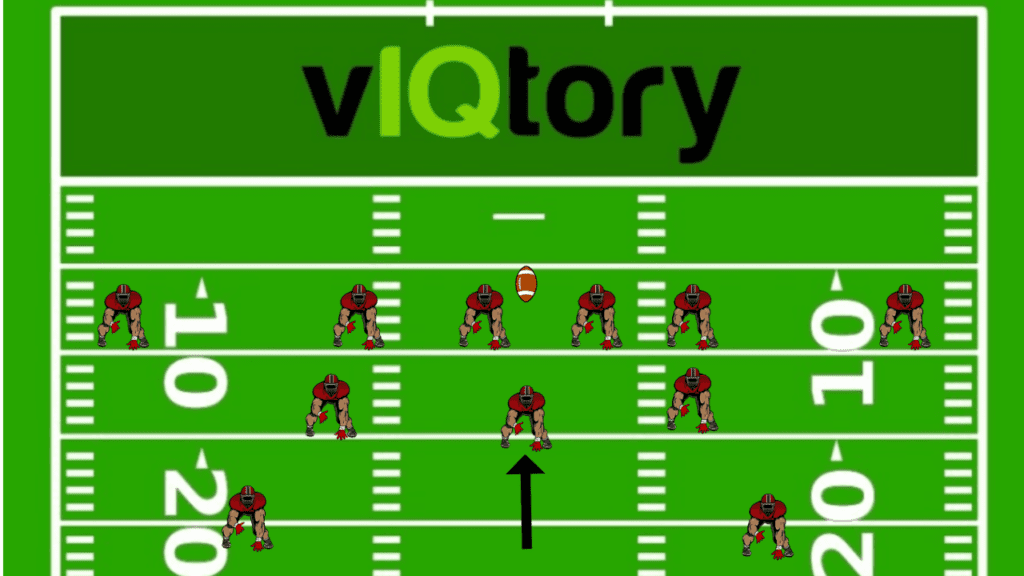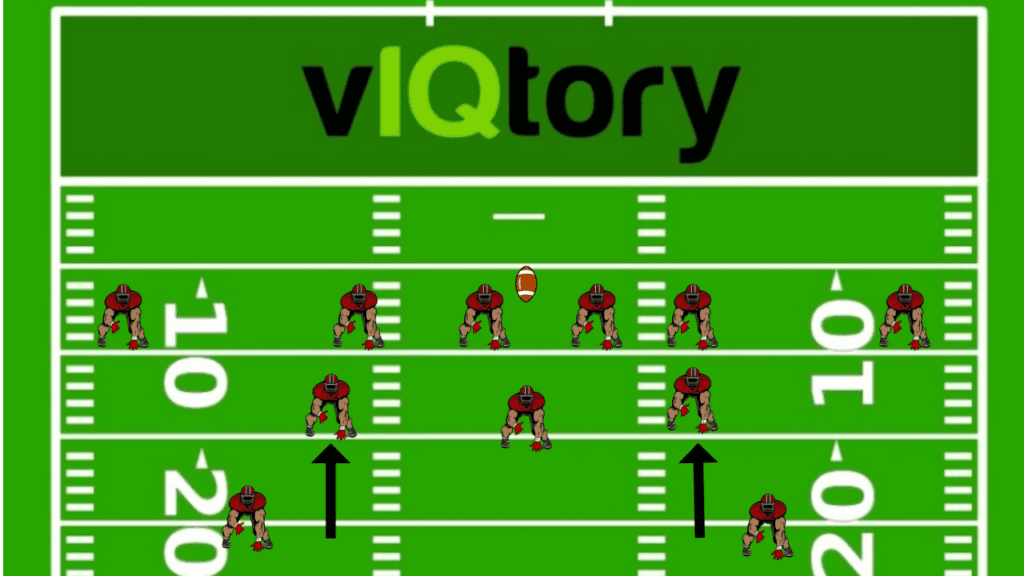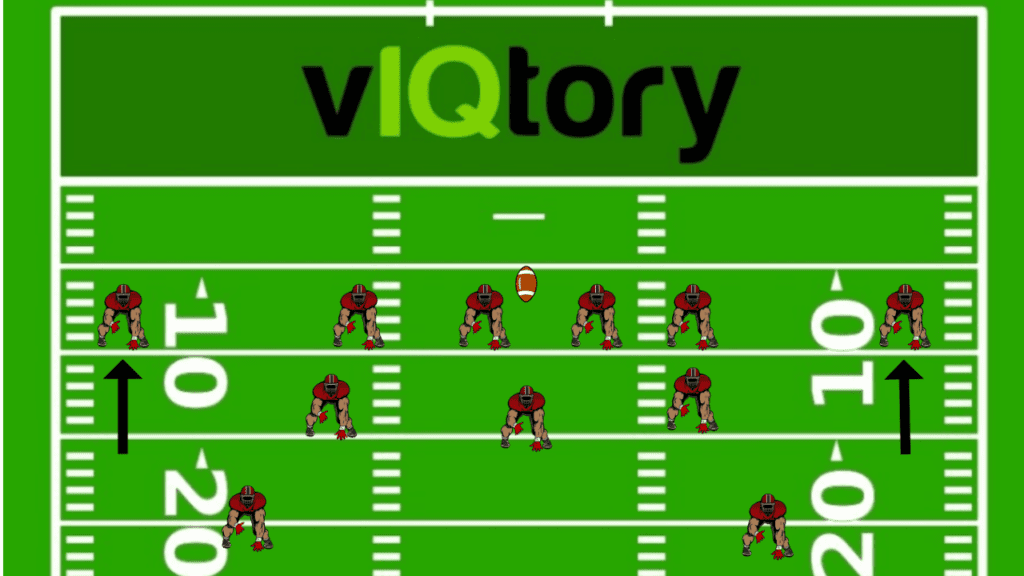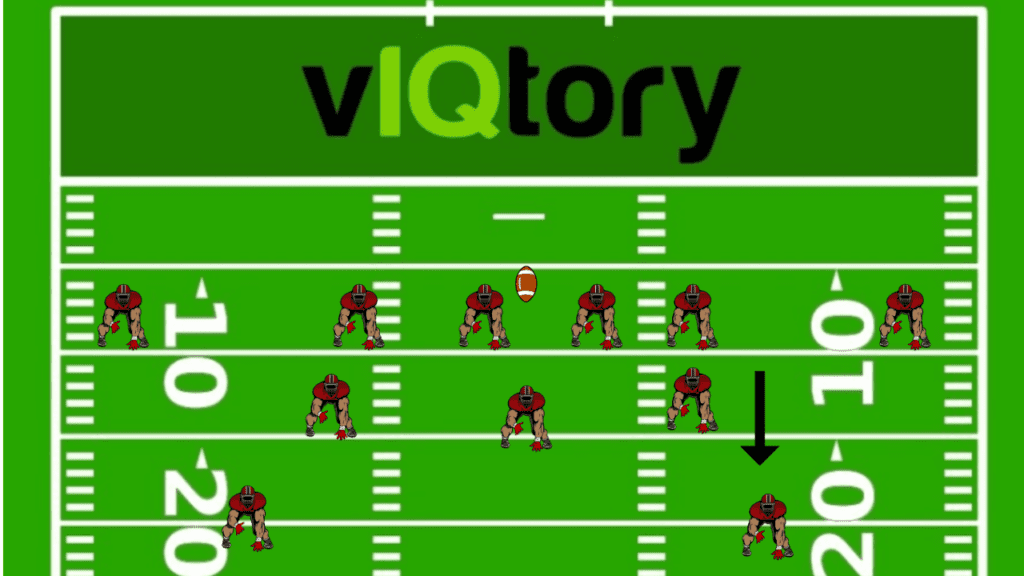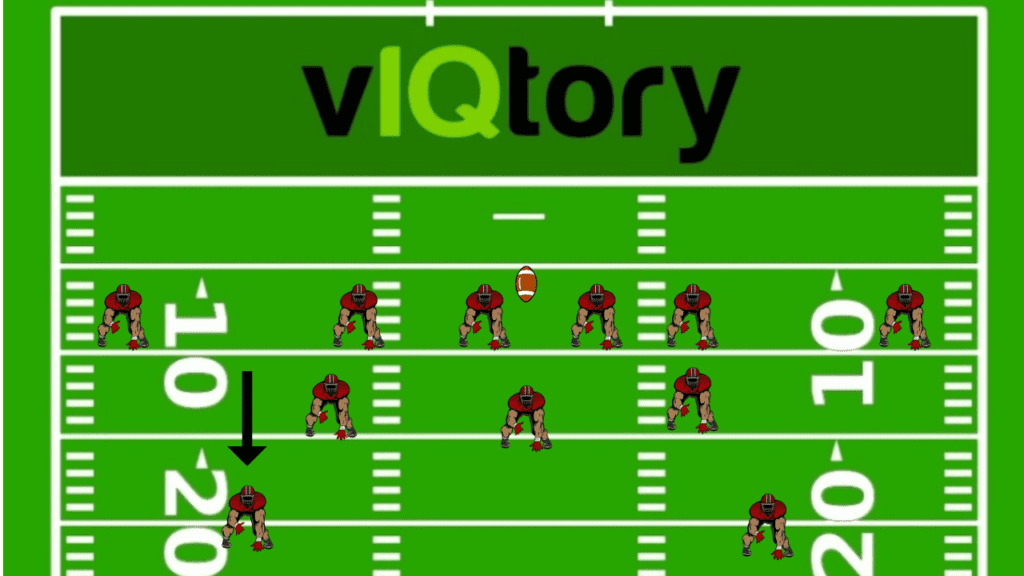American football positions can be complicated if you’re new to the game. Each position in the field is different and relates to a certain skill set.
Football players are often placed into a certain position based on their size, speed, and aggressiveness.
In this article, we’re going to show where each position in American football lines up and what their role and responsibilities are.
Offensive Football Positions Explained
The offensive team is the team that has the football and tries to score a touchdown. It’s the job of the offensive players and coach to put points on the scoreboard.
Each offensive player has a specific role and job to do to make the offense run properly.
Let’s learn more about the positions in football.
Quarterback (QB)
The quarterback is one of the most important positions on the field. The quarterback receives the snap from the center and will hand the ball off to the running back or throw it to a wide receiver.
The quarterback is typically the smartest and most athletic player on the field. They must have a loud cadence, be able to command the other players on the field and follow the coach’s game plan with no issues.
Good quarterbacks are very hard to find and develop due to the pressure from the defensive players.
The primary job of the quarterback is to make sure the passing plays are executed properly and the rushing plays are safely secured by the running back.
Learn more about the quarterback position here.
Running Back (RB)
The running back is the player that stands next to or behind the quarterback. Their job is to take the handoff from the quarterback and try to run for a touchdown.
There are two main running back positions, the halfback (also known as tailback), and the fullback.
Running backs are often the fastest players on the team, as they need to be able to run away from the defensive players.
Running backs will also block for the quarterback on pass plays or run routes, to get the ball thrown to them.
Learn more about the running back position here.
Wide Receiver (WR)
Wide receivers are often the tallest players on the field. Their main job is to catch the football that is thrown from the quarterback.
They must have soft and reliable hands for catching passes that the quarterback throws on passing plays. They must also have enough speed to be able to run away from the cornerbacks that are covering them.
On run plays, wide receivers will block the cornerback that is lined up in front of them.
The wide receivers are found at the end of the formation.
Get a more in-depth look at the wide receiver position here.
Slot Receiver
It’s common for offenses to have a slot receiver on the field. This player has the same roles and responsibilities as the wide receiver, but they are typically smaller in stature. They typically run shorter routes on passing plays as well.
Smaller, quicker players will play slot receiver and be in position to go in motion to take a handoff from the quarterback.
Offensive Line
Offensive linemen are typically the biggest players on offense. These players are often tall, heavy, and strong.
It’s the responsibility of offensive linemen to protect the quarterback on pass plays and move defensive linemen on run plays.
Teams can elect to have bigger offensive linemen and run a power offense that’s more physical. Or they can have smaller offensive linemen and run an offense that’s more quick-hitting.
The offensive line is broken up into three positions.
Center (C)
The center is the player who has their hand on the ball first. Every play begins with the center putting their hand on the ball and snapping it to the quarterback. This player needs to be talented enough to snap the ball and make an effective block.
In most NFL schemes, the offensive center is responsible for setting the line protection scheme and telling each lineman who they will block.
Guard (G)
The offensive guards are the two players who are directly next to the center. They are often named left guard and right guard. Each guard has an important job to make sure no penetration happens through the middle of the offensive line.
Guards are often smaller offensive linemen because they need to be able to pull and be on the move on running plays.
Tackle (T)
The offensive tackle position is lined up next to the offensive guards. Their positions are extremely important, as they will often set the edge of the pocket that the quarterback throws from.
Offensive tackles are often the biggest players on the field, as they are responsible for the quarterback’s front side and blind side. The blind side means if the quarterback is a righty, his left side will be exposed to hits that he can’t see. It’s important the left tackle (for a right-handed quarterback) protects the quarterback’s blind side and doesn’t allow him to take any devastating hits.
The most important role of offensive linemen is to block defensive players and make sure the opposing team doesn’t affect the play.
Learn more about the offensive line here.
Tight End (TE)
The tight end position is a mix between a wide receiver and an offensive lineman.
The tight end is responsible for blocking on-run plays and catching the ball on pass plays. Tight ends are often bigger-bodied players and resemble an athletic lineman build.
They typically line up next to the offensive tackles, or they can line up in the slot receiver position. They are also known as H-backs or Snifferbacks.
Increase Your Football IQ
Why spend hours on Google and YouTube trying to learn football yourself? We’ve created a simple guide to help make you the smartest person in the room.
Defensive Football Positions Explained
Defense wins championships. That is the old football cliche that applies to every great team that has ever won a Super Bowl. It relies on the defensive team to make impactful plays and stop the opposing team’s offense.
Football is the ultimate team sport because everyone must be disciplined enough to execute their responsibility.
Each player is responsible for tackling the ball carrier and preventing opposing players from getting into the end zone.
Defensive Line (DL)
The defensive line is identified as the players that have their hands on the ground or are lined up on the line of scrimmage. They are often in a 3 point stance or a two-point stance.
The defensive line is broken up into 3 different types of players.
Nose Tackle (NT)
The nose tackle is often the biggest player on the defensive side of the ball. This player is responsible for playing both A gaps and not letting the offensive line move him.
Nose tackles are often the slowest players on the defense, but they play a responsible role in stopping the run.
Defensive Tackle (DT)
The defensive tackle, also known as a “3-Tech”, are also bigger-bodied players that are more athletic than the nose tackles.
They are responsible for stopping the run and having enough athleticism to rush the quarterback on a pass play.
This is the one defensive lineman who can cause a lot of problems for offensive linemen if they don’t block him properly.
Defensive tackles need to be big enough to stop the run, and athletic enough to put pressure on the quarterback on pass plays.
Defensive Ends (DE)
The defensive end plays in the end position on the line of scrimmage. They are responsible for stopping any outside runs and also rushing the passer.
They are often taller players who can use their length and speed to beat the offensive tackle and disrupt the quarterback.
For teams that use four defensive linemen, it’s common to see two defensive ends, a nose tackle and a defensive tackle.
Teams that use three defensive linemen will use a nose tackle and two defensive ends.
Linebackers (LB)
The linebacker position is one of the most important positions in the field. They are often called the captain of the defense. Teams will often designate their best tackler to play the linebacker position.
Most teams have two types of linebackers.
Inside Linebackers (ILB)
The first type of linebacker is an inside linebacker. This player is primarily responsible for stopping the run inside of the box. They need to be strong and tough enough to shed blocks from an offensive lineman.
On pass plays, they will often cover the middle of the field. That means in Tampa 2 coverage or any zone coverage, they will cover that area effectively.
Inside linebackers in a 3-linebacker system are also known as the middle linebacker or the “Mike” linebacker. The middle linebacker can often be seen directly in the center of the defensive formations.
Outside Linebackers (OLB)
Outside linebackers are more athletic players and play outside of the box. They are responsible for making open-field tackles against running backs and wide receivers.
The height of an outside linebacker doesn’t necessarily matter, as they will be tasked with covering and stopping the run. Quicker players are more effective at this position than bigger, slower players.
Defensive Backs (DB)
Defensive backs are the most athletic players on the football field. They need to be able to move backward just as effectively as moving forward.
The defensive backfield is broken up into three sub-groupings.
Cornerbacks (CB)
First, the cornerbacks are often the widest players on the defensive side of the football. They are tasked with covering the wide receivers. Cornerbacks are athletic players who can run fast, jump high, and cover the taller receivers.
Strong Safety (SS)
The strong safety on defense is a glorified outside linebacker. They are tasked with being able to tackle in space but also being able to cover slot receivers.
The strong safeties are often fast, athletic, and hard-hitting. Coaches may use the strong safety as an outside linebacker in the 4-4 scheme.
In a true 4-3 structure, the strong safety will play the opposite of the free safety.
Free Safety (FS)
The free safety on defense is often the smallest player on the defense. The role of the free safety is to make sure big runs and long-distance plays don’t occur.
In single-high schemes such as cover 1, the free safety can be seen alone in the middle of the field about 15 yards off of the football.
Special Teams Positions
Special teams are a very important part of the game, as they help determine the field position of where the ball will start each drive. Each team will have designated special teams players, such as a punter and kicker.
Punter
Each team will carry a punter, who will be responsible for punting the football on fourth downs. When the offense doesn’t want to go for it on fourth down, they will bring their punting team on the field.
The punter will punt the football, and the punting team is responsible for running down the field as fast as they can to tackle the punt returner.
Placekicker
The placekicker is different from the punter, as they will kick a stationary ball on kickoff or for a field goal.
On kicking plays such as kick-off, the kicker will kick the ball to the kick returner, and teams will try to tackle him. This is how field position is established in football.
This player will kick field goals (both extra points and field goals) to help the offense score more points. This player typically has the strongest leg on the team and can be the result of points gained or games lost.
Football Position Recap
Each football position plays a crucial role in the team’s overall success.
The players on the field dictate every offensive formation and defensive formation. Defensive plays and offensive plays are designed to take advantage of personnel. This is why offenses will use more receivers and tight ends, than running backs.
Football can be a complicated game, but we made it easy with our Beginners Guide To Football below.
Other systems may use more running backs and fewer receivers. One common thing is that there will be five offensive linemen on the field at all times.
Defenses will try to match the personnel that is put on the field by the offense with their own speed or power players. This is the chess game football coaches deal with every game.
If you liked learning about American Football positions, we recommend you check out these other articles.

